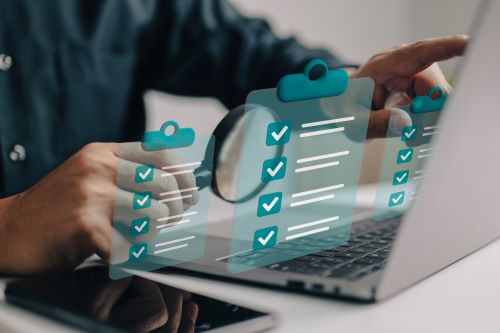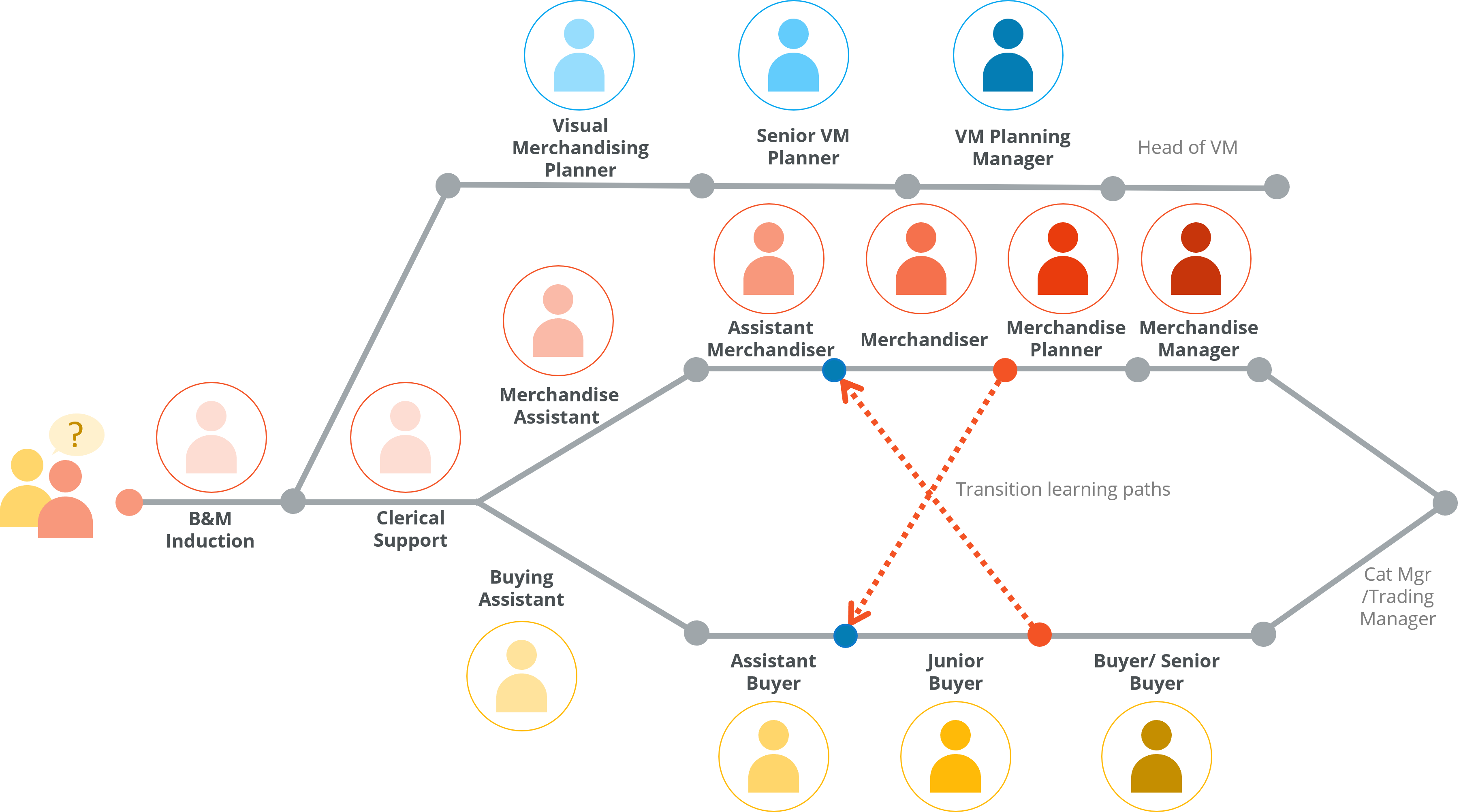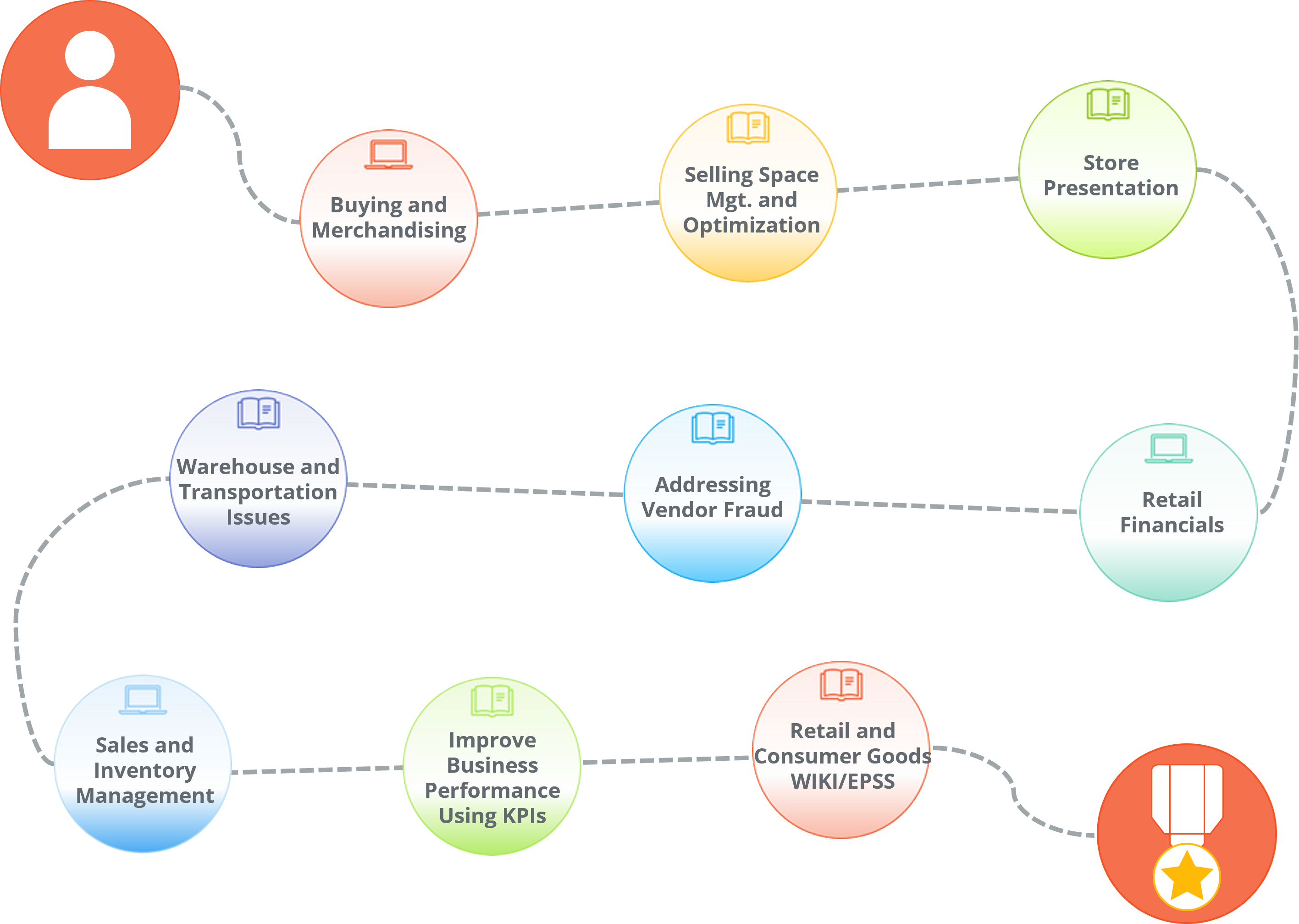Personalisation of Training
Personalisation of training is one of those buzz phrases of the day in the training sector. It’s important because the argument says that if learners can pick and choose the training they are most interested in, or they believe is most relevant to their personal needs, they will pay more attention, engage more deeply, and both the individual and the firm they work for will get a better result.
But in an enterprise with hundreds or thousands of employees, how can any company achieve personalisation? Equally, how can any individual select the right training for themselves when they don’t know what they don’t know!
And, if you are a believer and committed to the idea of personalised training for your employees, how can you achieve it affordably and practically?
We have thought long and deep about this, and this document describes our approach, our contribution and how our development plans are being shaped to make it practical and affordable.
We will review this initially from the point of view of the firm and then the learner and present our recommendations on how to make this work. We will also summarise our recommendations for interested Training and Human Resources executives.
Advanced Preparation for The Firm
Start with the business organization structure, which will be made up of departments, each with its own organization chart. The organization charts are populated with a series of job roles and the names of the people in those roles. For this stage, ignore the individuals and focus on the roles involved.
If you are starting, or close to starting on this journey, identify the job roles with the largest number of employees, those with the highest staff churn, or those with more direct connections to achieving the key business goals of the firm. For example, if availability on the store shelf is a critical issue right now, merchandise planners, merchandisers and assistant merchandisers might be priority roles to start with. If the rate of attrition of store managers is too high, they might be a priority too depending on what your exit interviews with departing store managers tell you. However you define your pressure points, rank all job roles in priority order and start with the top handful. You shouldn’t try to boil the ocean on your early steps.

Do You Have Current Job Descriptions for Those Roles?
If so, does the job description do a good job of identifying the core competencies that someone in each role needs. If so, that’s a great start. If not or you don’t have job descriptions (and not every company believes in them), you will need to create a list of core competencies for each job role under consideration.
There are two shortcuts you can take to make this task quicker and easier:
- Do web searches for job descriptions of each role. You will find examples of other companies’ job descriptions and on some recruitment firms pages. Make your starter list of competencies required from the relevant pages you find.
- If you don’t have one, set up a free ChatGPT account. Then ask ChatGPT “give me list of key competencies for Assistant Merchandiser”. You will get a typically one-page list of very helpful input. An example is included later in this paper. If the response isn’t quite what you need, you can change the question and re-submit it to get another reply. Sometimes, limited iteration will give you a better starting point.
Match the results from items 1 and 2 above and generate your version based on the combined results. This will give you a great place to start.
Then, as the last step, take some subject matter experts from the business function concerned and ask them to make any appropriate edits and include anything unique to your business.
Having done these steps so, you can look at the training you have already and determine which, if any, of these competencies your training addresses today. Many companies will have libraries or access to libraries of classes on Microsoft Office skills, especially Excel, for example. In the same way, you may have communications skills training. You might also have some in-house developed business process skills training.
When you have matched what you do have to the competencies you know you need, you can create a list of missing components that may need to be sourced externally. In the real world, it is unlikely that you will have the training budget to do everything you need, hence identify the job roles that suffer the greatest churn, those that need upskilling to achieve key business goals and any other key criteria that apply to your company and make those your priority.
Now we have our start point, let’s move on and look at how we can achieve personalisation.
Personalisation from the Company’s Perspective
There are three start points to effective personalisation, from the company’s perspective:
1. Hiring Interviews
 |
|
When you interview potential new hires make sure that the interview process has a section where the interviewer(s) can review the list of competencies that a role requires and score the level of competence that the interviewee demonstrated. This will not be perfect, but it is a good start. If you hire that person, you know that in their personal training plan, there are some elements you may mark as demonstrated already and can therefore be skipped. You may choose not to do this step for new graduate intakes, for example. Everyone must do the complete induction plan. Sometimes, it is better to let the individual “test out” of learning pieces before studying them. This gives the learners added confidence in their skill levels. When you have more good candidates than you have vacancies, the number of competencies each interviewee was credited with can be part of the decider on who to hire. When an interviewee accepts a job offer, their competency assessment can be set up in the HR record keeping system, so that a more personalised training plan can be generated. |
2. Staff Appraisals
 |
|
When you conduct staff appraisals, the appraiser can review the list of competencies for the appraisee’s current role and discuss where the appraisee feels strong or in need of development, and whether their manager sees it the same way. In addition, staff who have been in the current role for a suitable period of time can have their competencies for the next role they might aim to be promoted into addressed. Assuming staff can have ready access to training for the next role, the ambitious ones might choose to study the training for that role in their own time to improve their promotion prospects. The same can apply to potential sideways moves identified in the appraisal. In the HR record keeping system, competencies that both parties agree are already sufficiently well addressed can be noted as such and any outstanding ones can be ranked in priority of need to address them. In all other respects, the appraisal proceeds as normal. |
What do you do if you don’t have a good appraisal system, or your company does not believe in them. If it’s a systems weakness, you may be able to use a cloud-based HR system on a limited licence to meet this specific need, or you might be able to find a Learning Management System that will cover this for you.
If the company does not do appraisals, the third approach is to build a competency assessment test, which is sometimes done anyway in training needs analysis projects.
3. Competency Assessment Test
 |
| Once you have a list of competencies needed for a job role, you can build an online test that includes assessment questions on each individual competency. The learner takes the test answering as many questions as necessary to demonstrate competency or the lack of. Unlike class mastery tests, this is not a pass/fail test. This is "competency A has been demonstrated, competency B has not". An individual record can be created recording the status of each competency and the results used to adjust the learning path for that individual learner. The test result can tell a learner which sections they can skip on their standard learning path and still get full achievement. If a digital badge is earned at the end of the learning path, interim credits can be given for competencies assessed in interview or appraisal, or by mastery test. |
Personalisation from the Learner’s Perspective
If you are a highly motivated learner, what aspects of personalisation are important to you? It could include any combination of the following:

Having the information to spend the time I can devote to learning in the way that achieves my goals best.

Helping me assess where I am today. The competency assessment test will play a key role in this, but employer feedback will also be helpful.

Providing and receiving guidance on where my career opportunities might be in the firm.

Helping me identify the learning that will give me the greatest job satisfaction.

Helping me do my current job well, so I can earn pay rises and create promotion opportunities.

Allowing me to study when and where it suits me best – home or work and at a pace I can choose.

Learning in various ways – through online courses, reading, watching videos, getting just in time information when I need it, having practice sessions, working in collaborative groups, etc.

Providing progress tracking and recognition. Help me earn the respect of my colleagues and superiors.

The ability to set personalised learning paths, either myself or with the assistance of my employer.

Getting personal guidance from subject matter experts. This might include some of expert reviews of exercise answers, coaching and mentoring.

Being able to download tools and job aids to help with performance support when the initial training is complete.

Being able to see my personal growth in confidence and knowledge and to help me do the job to the best of my ability.
How Martec Supports Personalisation
Where does Martec fit in this? We operate in two industry segments – retailing and the consumer goods supply chain. We serve three types of clients:
- Retailers
- Consumer goods producers
- Service companies that sell into the first two, such as IT companies, accountants, consultants, and third-party logistics companies
And we do it in nearly 60 countries.
Following the structure of this white paper we will now explain how we help get the advance preparation right for our clients.
Advanced Preparation
On our web site we publish a series of career maps or career paths that show the various roles in the business areas we cover. You can select a relevant career path and see the detailed career map. Any job role with an associated avatar has a unique learning path associated with it. Click on any avatar and you will go straight to the learning path for that role.

The learning path will include a series of classes and, in many cases, a series of pages in our retail and consumer goods industry WIKI/employee performance support system. These will address the generic set of competencies needed for that job role. However, we only address the industry specific needs.

For example, the core competencies for an assistant merchandise might be:
- Product knowledge: An Assistant Merchandiser should have a deep understanding of the products they are working with. This includes knowledge of materials, trends, styles, and product features. They should be able to effectively communicate product details and benefits to internal teams and customers.
- Analytical skills: Strong analytical skills are crucial for an Assistant Merchandiser. They need to be able to analyze sales data, market trends, and customer preferences to make informed decisions regarding inventory management, pricing, and product assortment. Proficiency in Excel and data analysis tools is often required.
- Planning and organization: Assistant Merchandisers are responsible for coordinating various aspects of product planning and execution. They should be skilled in organizing and prioritizing tasks, managing timelines, and ensuring deadlines are met. Attention to detail and the ability to multitask are essential in this role.
- Communication and collaboration: Effective communication and collaboration skills are vital for an Assistant Merchandiser. They need to work closely with cross-functional teams such as buyers, suppliers, designers, and marketing teams. Clear and concise communication, both written and verbal, is necessary to convey information, negotiate with suppliers, and build strong working relationships.
- Numerical proficiency: Assistant Merchandisers frequently work with numbers, including sales figures, budgets, forecasts, and pricing. Strong numerical skills are important for accurate data analysis, financial calculations, and budget management.
- Trend awareness: Staying up to date with industry trends, fashion trends, and market demands is essential for an Assistant Merchandiser. They should have a keen eye for emerging trends, consumer behavior, and competitor activities. This knowledge helps them make informed decisions about product assortment and marketing strategies.
- Problem-solving abilities: Assistant Merchandisers often face challenges related to inventory management, sales forecasting, and supplier issues. They should be adept at problem-solving, thinking critically, and finding creative solutions. The ability to anticipate and proactively address potential issues is also valuable.
- Adaptability and flexibility: The retail industry can be fast-paced and dynamic, requiring Assistant Merchandisers to be adaptable and flexible. They should be able to handle changing priorities, work under pressure, and adjust plans as needed to meet business objectives.
- Commercial acumen: Assistant Merchandisers should have a good understanding of the commercial aspects of the business. This includes knowledge of pricing strategies, profit margins, and financial metrics. A commercial mindset helps them make decisions that align with the company's financial goals.
- Attention to detail: Accuracy and attention to detail are crucial in an Assistant Merchandiser role. They are responsible for managing product data, monitoring inventory levels, and ensuring data integrity. Errors or oversights can have significant impacts on product availability and profitability.
In this example, Martec addresses numbers 2, 3, 5, 6, 7, 9, and 10. Number 1 – product knowledge is normally addressed in house, though we have helped clients with this. In number 4 we address the organization structure and the job responsibilities an assistant merchandiser needs to communicate, but generic communication skills training is not our thing. We don’t directly address number 8 either. Other versions of this list might include things like MS Excel skills and other “horizontal skills” which we also do not address. However, our clients will often have arrangements for these training needs with other suppliers, or there are lots of third-party sources to choose from.
We sometimes produce custom job descriptions for clients with more specific lists of competencies.
Personalisation from the Company’s Perspective
For clients without well-developed HR systems of record, we sometimes produce competency assessment tests as described in item 3 under Company Personalisation above. Effectively, these are versions of the mastery tests included in the content for each learning path we support and can include further customisation if required. These tests can be held in the company LMS or Martec’s cloud based LMS, to be used by individuals on their own initiative or under company direction.
We export the test results into a spreadsheet that calculates which competencies have been mastered or part mastered and produces learner reports, which can then be used to create personalised learning paths in the LMS.
Personalisation from the Learner’s Perspective
We do a number of things to help learners get a personalised service. These include:

Our learner can access most of their learning content at any time of day or night in any time zone.

We have a list of core competencies for each class we offer, so we can provide a matching service.

We build competency assessment tests for clients and analyses of the results, so that companies or individuals can develop personalised learning paths.

Optionally, we provide collaborative or group training sessions with live instructors for companies with groups to train at one time.

All our classes include an Ask the Expert facility for individual learners. Questions are answered by subject matter experts within 5 business days, but 90% are answered in two.

We use our survey process to keep our classes and customer services current. At the time of writing (October 2025), we have over 12,000 survey responses to guide us.

We provide customised reinforcement learning as an optional extra.

Our classes and WIKI provide a series of downloadable job aids, performance support tools and on demand revision, so learners can recap knowledge just in time.

We can and do recommend the right combination of classes and services for corporate clients and individual learners to achieve their specific goals.
Summary
Personalisation of training is one of those buzz phrases of the day and the need is here to stay. It’s important because if learners can pick and choose the training they are most interested in, or they believe is most relevant to their personal needs, they will pay more attention, engage more deeply, and both the individual and the firm will get a better result.
But in an enterprise with hundreds or thousands of employees, how can any company achieve personalisation and how can they do it affordably?
In this paper, we have presented the steps any company needs to take and for the retail and consumer goods sectors we have described how we make it feasible and affordable.
It starts with:
- The business goals – which core competencies do you most need to improve in order to achieve key business goals.
- Identifying the pain points the business has where training can help. For example, if store manager attrition is a pain point, what is causing it and can training address any of the reasons? If the pay is too low, then probably not. But if it is pressure on store managers because shrink is too high, better training could definitely help reduce the pressure and stress levels. It will also reduce recruitment costs and lost productivity costs while new hires get up to speed.
- Having understood the first two above, the third factor is to identify the core competencies you most need to develop, to address the issues of concern.
When you have these first steps in place, you can inventory current training programs you already use to see which competencies they cover and create a list of gaps. Then you can look for ways of fulfilling those gaps.
Because the budget for training is never enough, rank the competencies you need to build or improve in priority order and spend the money on the most important ones, those with the biggest return for the investment.
If you are in the retail or consumer goods fields, Martec can make your money go further and even help you with the return-on-investment justification.
And while you are grappling with business goals and competencies most needing improvement, you may find it helpful to read our page on capability academies.
